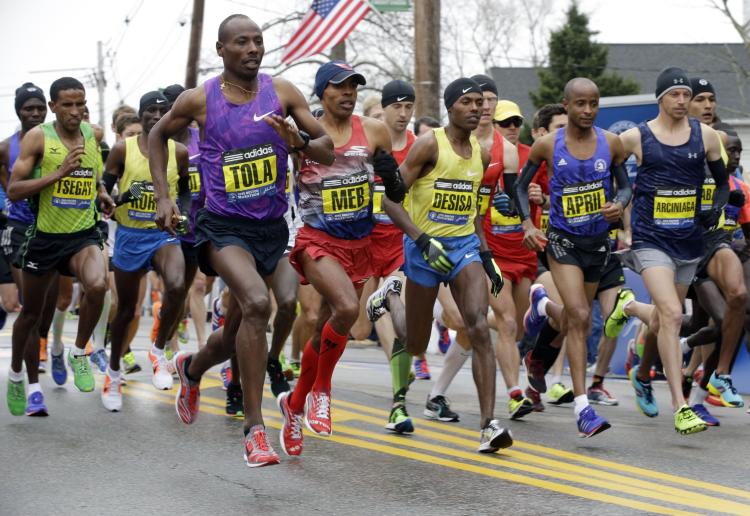Break the two-hour marathon record? It could be done

A CU Boulder-led team has laid out a series of mathematical calculations showing how one or more of the world’s elite men marathoners could break the storied two-hour mark, shaving about four and a half minutes off the current world record.
Kenyan Dennis Kimetto set the current world record of 2:02:57 at the Berlin Marathon in 2014.
According to postdoctoral researcher Wouter Hoogkamer, who led the new study – published online today in the journal Sports Medicine – the calculations for running a marathon in under two hours include the baseline physiological capacity to run Kimetto’s time. The team then considered biomechanical changes that could reduce energy consumption and improve running economy.
People have been thinking about the magical sub-two-hour marathon for a long time,” said Hoogkamer. “Our calculations show that a sub-two-hour marathon time could happen right now, but it would require the right course and a lot of organization.”
“People have been thinking about the magical sub-two-hour marathon for a long time,” said Hoogkamer. “Our calculations show that a sub-two-hour marathon time could happen right now, but it would require the right course and a lot of organization.”
So what is the recipe? For starters, the athletes would need shoes roughly 100 grams lighter (about the weight of a deck of cards) than Kimetto’s world record shoes, which weighed 230 grams, or just over eight ounces each.
A previous study led by Hoogkamer and Professor Rodger Kram showed running in 130-gram shoes could shave 57 seconds off a marathon time.
In addition, a record-breaking elite runner would do best running the first 13 miles of the race as a loop course behind a wedge of marathon “pacemakers.” He would need to draft behind them on a route that blocks the wind like a paved loop through a pine forest, said new study co-author Kram of the Department of Integrative Physiology.
A 1971 study by a British scientist showed that one runner drafting one meter behind another runner in a wind tunnel can reduce air resistance by 93 percent, said Kram. But even reducing air resistance for the drafting runner by just 36 percent would improve running economy by 2.7 percent, the savings needed to facilitate a marathon time of 1:59.59 for an athlete capable of running a solo 2:03:00 marathon.
The second half of the race, according to the new study, should be slightly downhill but still within the regulations of the International Association of Athletics Federations (IAAF), with four top runners in a line, one behind the other, said Hoogkamer. They would need to take turns blocking the air resistance and cooperatively “drafting” off of each other, much like cyclists do in road races. This could reduce the metabolic cost of the drafting runners by about 5.9 percent, shaving about three minutes off the current world record.
Alternatively, the CU Boulder study showed marathon runners in the second half of the hypothetical course could also shave off about three minutes of time in the marathon if they were lucky enough to have a strong tailwind approaching 13 mph.
“We are not the first team to suggest such ideas to speed up marathon runners,” said Kram, who directs CU Boulder’s Locomotion Laboratory. “But we are the first to quantify each of the strategies with careful calculations in a single paper.”
One challenge to breaking the record as a collaborative team is the cash prizes for winning a major marathon, which can be several hundred thousand dollars, said Kram. This issue could be solved if there were an incentive agreement between racers to equally split the prize money awarded to the top finishers.
Running a marathon under two hours is a longtime fascination of runners, fans and sports companies. In addition to websites and books on the topic, Nike Inc., Adidas and a group called Sub2hr have each assembled their own dedicated teams of athletes, coaches and scientists intent on breaking the record.
“This study is significant for both scientists and serious marathon runners because we really delve into what we know about the exercise physiology of running, as well as the biomechanics of running,” said Assistant Professor Christopher Arellano of the University of Houston, a study co-author who received his doctorate under Kram. “Now it’s up to scientists and the most elite marathon runners to put our ideas to the test.”


